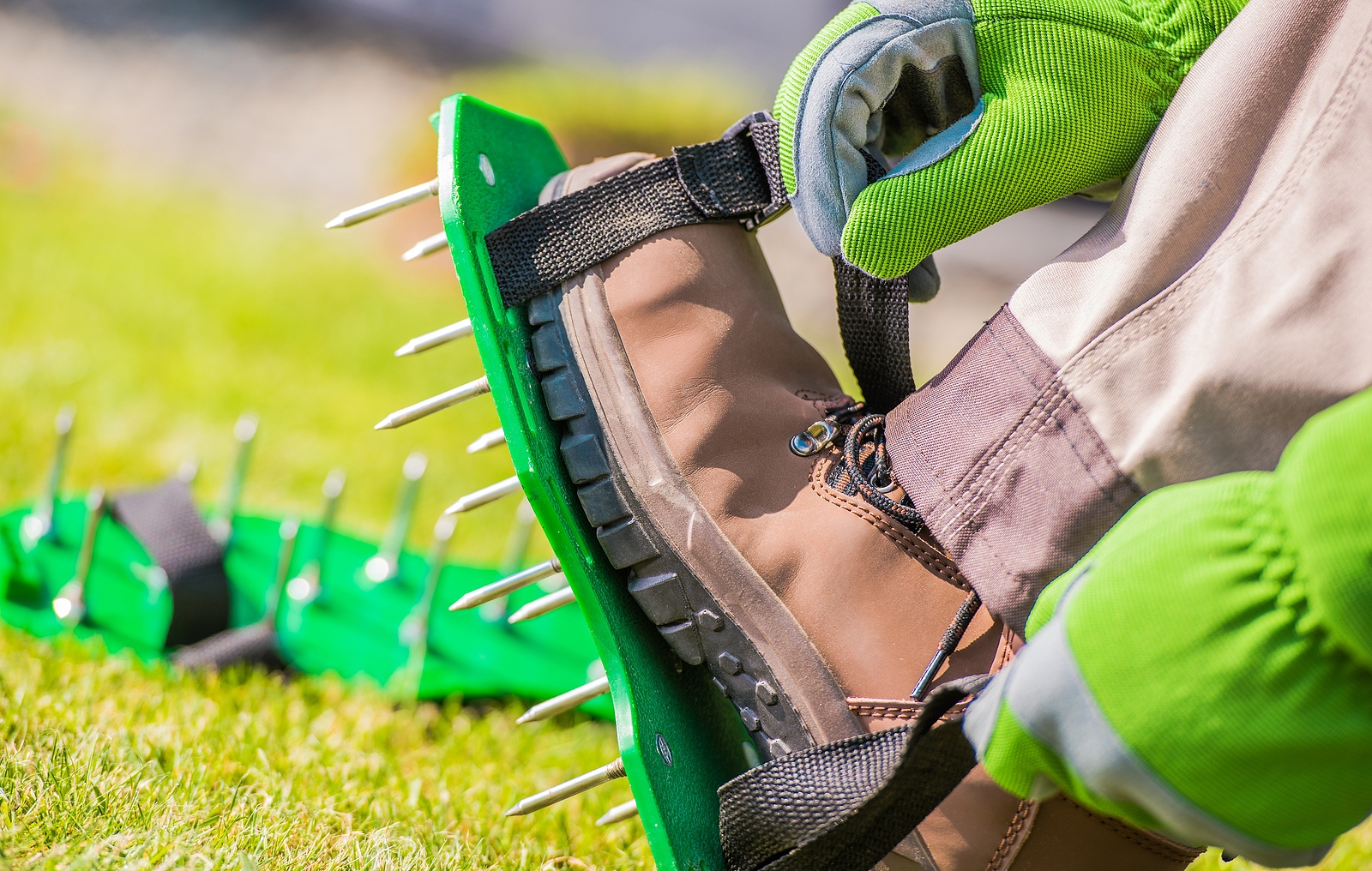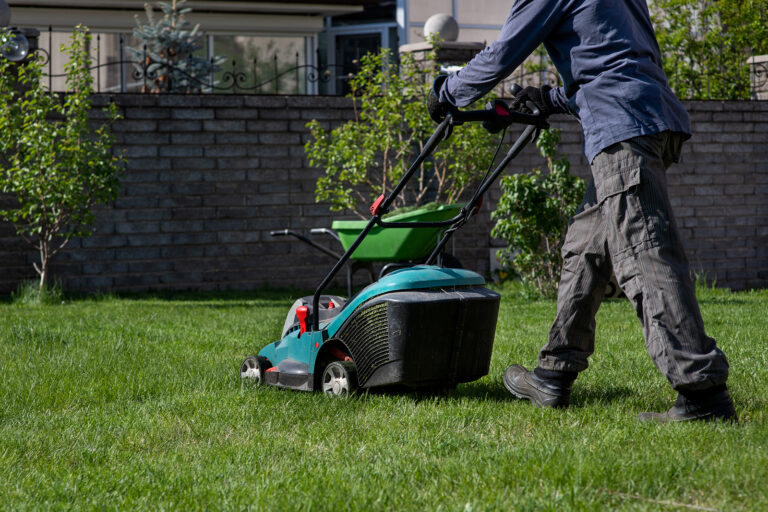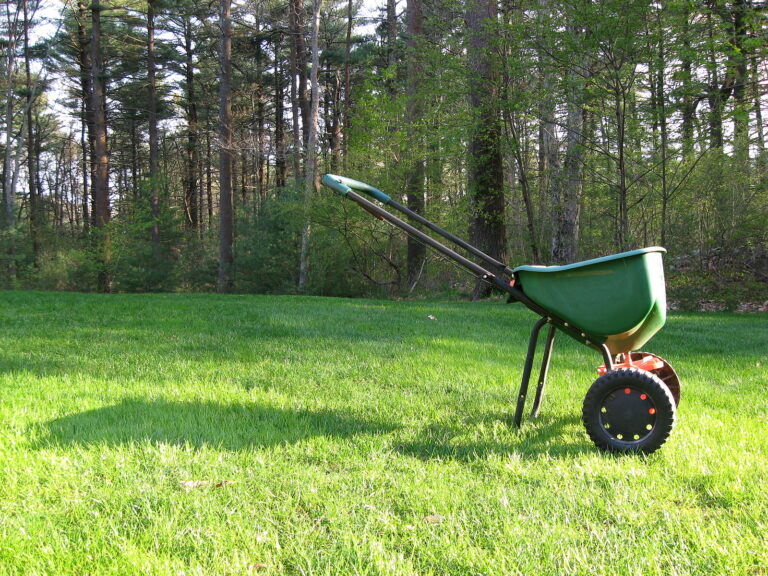How to De-Thatch, Aerate, and Overseed a Lawn
Lawns sometimes need aerating, de-thatching, and overseeding. Aeration, de-thatching, and overseeding are lawn maintenance tasks. They are not necessarily co-dependent tasks, but they are often done about the same time.
- Aeration means to poke tiny holes in the ground to loosen compacted soil; this will allow air and water to penetrate. Aerating enables roots to grow deeply; the result is a more vigorous, healthy lawn.
- De-thatching is the removal of dead grass stems, dead roots, and debris from the lawn. Thatch is dead organic matter that has not decomposed. Thatch prevents water and fertilizer from reaching grass roots.
- Overseeding is the addition of new seed to a lawn. Lawns are overseeded to create a thicker lawn. Dormant lawns are overseeded to add winter color to the lawn.
Aeration, de-thatching, and overseeding alone or together can revitalize a lawn. Here’s how to do each of these tasks:
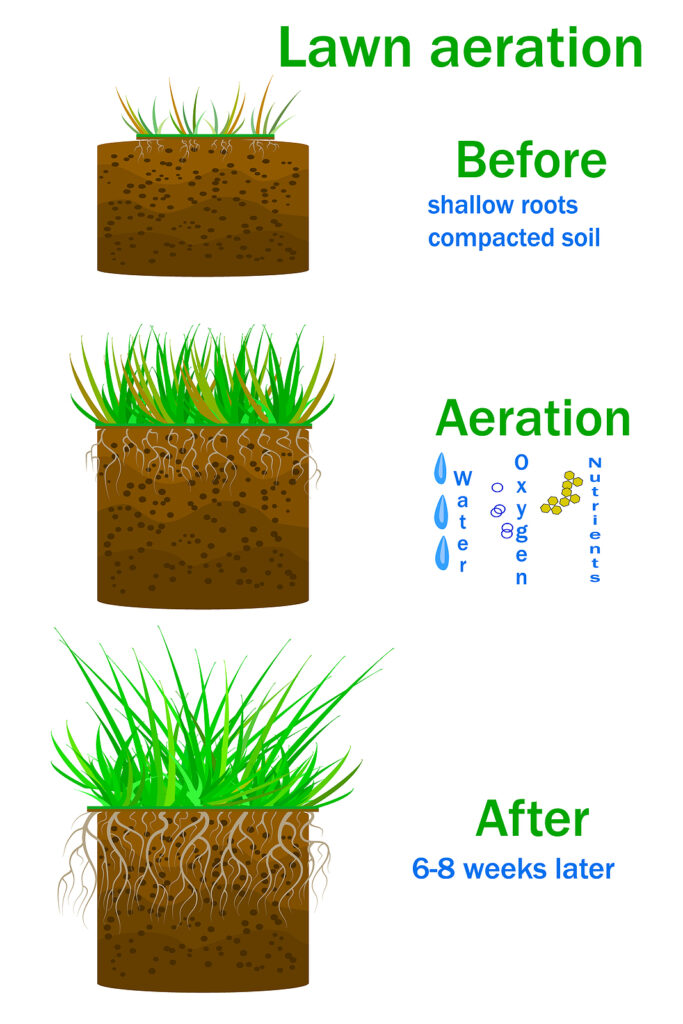
Aerating a lawn
A lawn should be aerated when the soil has become compacted. Aeration will poke holes in the soil every few inches across the lawn.
Lawns that experience heavy traffic or are regularly maintained—mowers running over the lawn—should be aerated once a year; lawns that receive moderate traffic or maintenance should be aerated every two years. Lawns with heavily compacted soil or severe thatch problems may need aeration twice a year.
Testing for compaction. To know if the lawn is compacted and needs aeration, do this test: when the soil is moist, plunge a ¾ inch metal pipe or tube into the lawn to remove a plug. Tap the pipe to recover the plug; if the grass roots are only an inch or so deep, your soil is compacted. If there are roots 4 to 6 inches (10-15cm) deep, the soil is not compacted and healthy.
How to aerate a lawn. Small lawns can be aerated with step-on aerating tools or special spikes you can attach to your shoes. Use an aeration machine—called a core aerator–for large lawns; these can be rented or purchased.
Aeration pokes holes in the soil or removes thin, cigar-shaped plugs of soil. Plugs can be left on the lawn to disintegrate.
When to aerate a lawn. Aerate cool-season grasses, such as Kentucky bluegrass, in the fall about six weeks before the first average frost date. Aerate warm-season grasses, such as Bermuda grass, in midsummer.
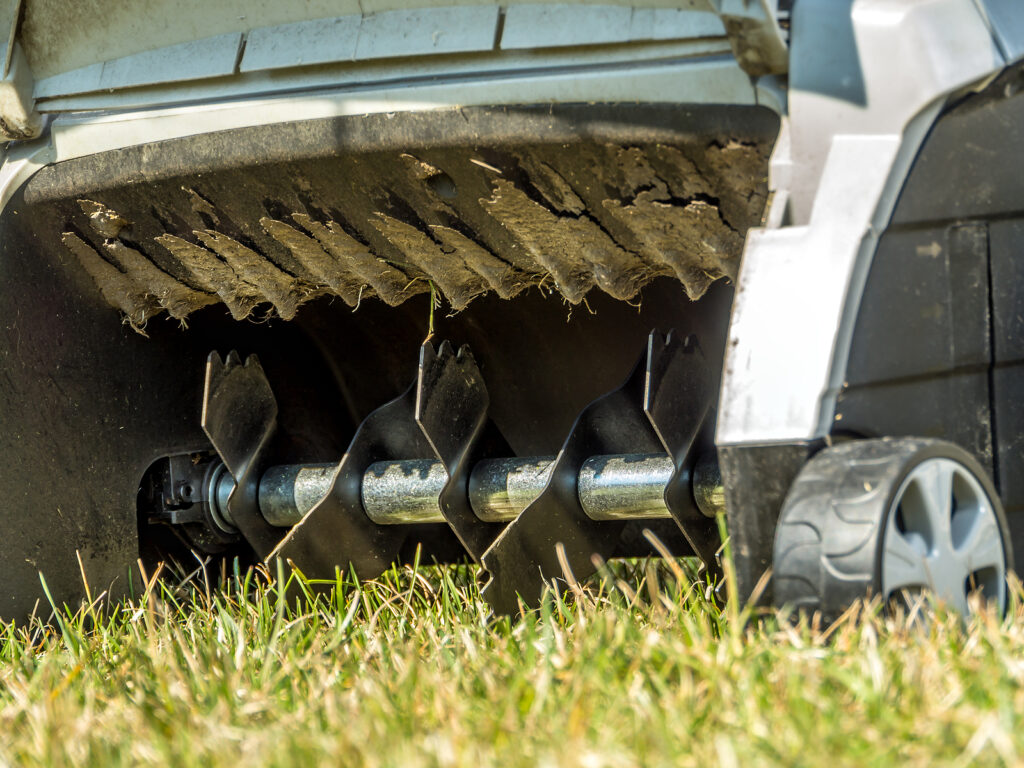
De-thatching a lawn
Thatch is dry, dead organic matter such as grass stems, dead roots, and debris that builds up in the lawn quicker than it can decompose. Thatch accumulates on top of the soil at the base of grass blades.
Thatch thicker than ½ inch can prevent water and fertilizer from reaching grass roots. A layer of thatch 2 inches thick is a severe problem.
If a lawn feels spongy when you walk on it with firm-soled shoes, there is likely too much thatch.
Thatch can be caused by poorly aerated soil, too much nitrogen, shallow watering, and infrequent mowing; mowing too low can also leave debris in a lawn which turns into thatch.
How to de-thatch a lawn. There are several ways to de-thatch a lawn:
- Aerating the soil may remove thatch or alleviate the problem.
- For small lawns, a thatching rake—a rake with long, knife-like blades, can pull up thatch. Sometimes a steel rake or a simple leaf rake can take up light thatch.
- For large lawns, a power rake with a series of revolving vertical knives and cut and pull up thatch. These machines can be rented or purchased.
Every lawn should have a small amount of thatch to protect the soil and grass roots, but when thatch is too deep, water and nutrients can not reach grass roots.
One note, lawns that are organically fertilized will have more earthworms than lawns that are fed with synthetic fertilizers. Earthworms eat organic matter and aerate the soil; when earthworms are present aeration and de-thatching are needed less often.
When to de-thatch a lawn. De-thatching can disturb and injure lawn grass. A lawn will need several weeks and sometimes months to recover from dethatching. De-thatch the lawn when there is time for recovery; de-thatch cool-season lawns in late spring or early summer; de-thatch warm-season lawns in late summer or early fall.
Overseeding a lawn
Lawns are overseeded to make a thicker lawn or to repair thin spots in existing grass; lawns are also overseeded with cool-season grasses for winter greenery. You can also overseed a lawn to introduce new grass varieties to an older lawn that is less than ideal.
Overseeding a thin lawn. Determine why the lawn is thin: too much shade, too little water or drought, too little fertilizer. When you determine why the lawn is thin, you can then select new grasses that can help correct the problem.
Overseed the lawn with the appropriate grass, a grass that can tolerate or resist the problem. You may need to overseed with a cool-season grass or a warm-season grass.
Overseeding for winter greenery. In the South and West where freezing temperatures are not long-lasting in winter, brown, dormant warm-season lawns can be overseeded with cool-season grass that germinates quickly. Choose a grass that will die back when warm weather returns. Cool-season annual ryegrass and rescue are commonly used to overseed warm-season grasses.
How to overseed. To overseed, prepare the soil so that seeds can make contact with the soil: mow the lawn short, rake up the clippings, then mow and rake again; this will expose the soil.
Next, scratch the soil with a with a steel rake or garden claw to rough up the seedbed.
Sow at a greater rate recommended on the seed package then cover the seed with ½ inch layer of topsoil. Keep the soil evenly moist watering daily or every other day until the seeds sprout and grow to ½ inch high.
Allow the new grass to grow to the maximum cutting height before mowing; this will help thicken the lawn. Then mow one-third or less off the top.
Once an overseeded lawn is established, continue normal feeding, watering, and mowing. The new grass will eventually take over the lawn.
Also of interest:

